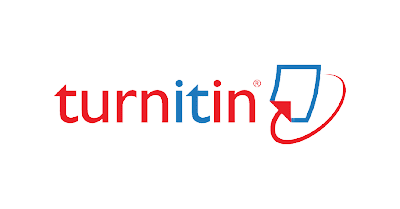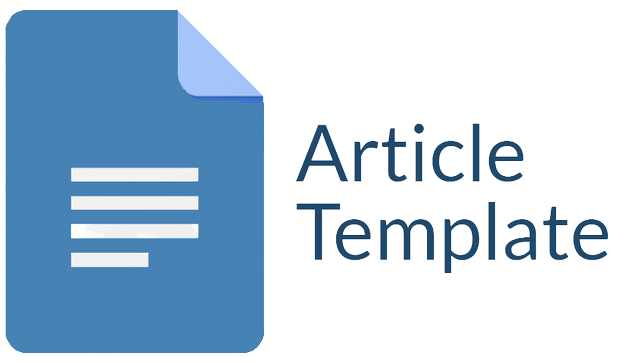SISTEM PEMANTAUAN KETINGGIAN AIR SUNGAI UNTUK TANGGAP BENCANA BANJIR BERBASIS INTERNET OF THINGS
Abstract
Banjir dengan dampak berskala luas melanda beberapa provinsi di Kalimantan. Pada Januari 2021 dari data BNPB tercatat sebagai banjir besar yang melanda Provinsi Kalimantan Selatan, ribuan rumah terendam dan banyak fasilitas umum rusak akibat bencana banjir. Peristiwa banjir di provinsi Kalimantan selatan berasal dari beberapa kabupaten di provinsi. Pada pertengahan tahun, bencana banjir melanda di provinsi Kalimantan Utara dan Kalimantan Barat, sedangkan pada Agustus 2021 bencana banjir tercatat telah merendam di beberapa daerah di provinsi Kalimantan Timur dan Kalimantan Tengah. Banyak korban dan fasilitas yang rusak, jika tidak ditangani dengan benar, akan menghambat, mengganggu dan membahayakan masyarakat. Instrumen yang diakui untuk mengelola peristiwa bencana memiliki siklus respons manajemen risiko yang cepat. Provinsi dengan tingkat risiko rawan banjir menunjukkan bahwa pencegahan banjir dan situasi pemantauan curah hujan penting untuk deteksi bencana banjir sehingga provinsi sekitarnya dapat mendukung provinsi lain dalam keadaan darurat, Informasi cepat dalam memulai deteksi bencana banjir dapat mengurangi risiko kerusakan pasca-banjir. Penelitian ini bertujuan untuk memantau keadaan cuaca dan batas ketinggian air sungai yang sebagaian besar menjadi pemicu terjadinya banjir di wilayah Kalimantan. Sistem Pemantauan menggunakan perangkat mobile dengan menghimpun data secara Real-Time dari sensor-sensor cerdas yang tertanam pada sistem berbasis Internet of Things pada daerah yang rawan akan banjir dan sistem terintegrasi dengan ponsel cerdas untuk tanggap bencana banjir.
Downloads
References
Adhicandra, I. (2024). Studi Kasus Tentang Penggunaan Teknologi Internet Of Things (IoT) Dalam Meningkatkan Efisiensi Energi di Bangunan Pintar. Edusaintek: Jurnal Pendidikan, Sains Dan Teknologi, 11(3), 1447–1457. https://doi.org/https://doi.org/10.47668
Alfikri, H., & Irianto, K. D. (2024). Implementasi Internet Of Things Pada Sistem Parkir Masjid Universitas Islam Indonesia , Indonesia Pendahuluan Parkir adalah kondisi di mana kendaraan berada dalam keadaan diam dan tidak bergerak untuk jangka waktu tertentu . Parkir mencakup setiap kendara. Edusaintek: Jurnal Pendidikan, Sains Dan Teknologi, 11(4), 1907–1920.
Cooper, A. C., Bùi, H. T. T., Nguyễn, L. T., Nguyễn, P. K., Nguyễn, T. H. T., & Phan, D. P. N. (2021). Deaf-led organizations and disaster communication in Việt Nam: Interdisciplinary insights for disability inclusive disaster risk reduction planning. International Journal of Disaster Risk Reduction, 65(August), 1–16. https://doi.org/10.1016/j.ijdrr.2021.102559
Ding, Z., Jiang, S., Xu, X., & Han, Y. (2021). An Internet of Things Based Scalable Framework for Disaster Data Management. Journal of Safety Science and Resilience. https://doi.org/10.1016/j.jnlssr.2021.10.005
Fan, C., Zhang, C., Yahja, A., & Mostafavi, A. (2021). Disaster City Digital Twin: A vision for integrating artificial and human intelligence for disaster management. International Journal of Information Management, 56(November), 1–10. https://doi.org/10.1016/j.ijinfomgt.2019.102049
Fernandez, M. (2021). Risk perceptions and management strategies in a post-disaster landscape of Guatemala: Social conflict as an opportunity to understand disaster. International Journal of Disaster Risk Reduction, 57, 1–9. https://doi.org/10.1016/j.ijdrr.2021.102153
Guan, X., Zang, Y., Meng, Y., Liu, Y., Lv, H., & Yan, D. (2021). Study on spatiotemporal distribution characteristics of flood and drought disaster impacts on agriculture in China. International Journal of Disaster Risk Reduction, 64(August), 1–13. https://doi.org/10.1016/j.ijdrr.2021.102504
Hashim, H. M., Ng, Y. G., Talib, O., & Md Tamrin, S. B. (2021). Factors influencing flood disaster preparedness initiatives among small and medium enterprises located at flood-prone area. International Journal of Disaster Risk Reduction, 60(April), 102302. https://doi.org/10.1016/j.ijdrr.2021.102302
Karunarathne, A. Y. (2021). Geographies of the evolution of social capital legacies in response to flood disasters in rural and urban areas in Sri Lanka. International Journal of Disaster Risk Reduction, 62, 1–42. https://doi.org/10.1016/j.ijdrr.2021.102359
Lahiri, S., Snowden, B., Gu, J., Krishnan, N., Yellin, H., & Ndiaye, K. (2021). Multidisciplinary team processes parallel natural disaster preparedness and response: A qualitative case study. International Journal of Disaster Risk Reduction, 61(July 2020), 1–9. https://doi.org/10.1016/j.ijdrr.2021.102369
Maulana, A., Kusumasari, B., & Giyarsih, S. R. (2021). Komunikasi Bencana di Twitter: Studi Kasus Bencana Banjir Perkotaan di Daerah Khusus Ibukota (DKI) Jakarta`. Jurnal Kawistara, 11(2), 129. https://doi.org/10.22146/kawistara.v11i2.58123
Monte, B. E. O., Goldenfum, J. A., Michel, G. P., & Cavalcanti, J. R. de A. (2021). Terminology of natural hazards and disasters: A review and the case of Brazil. International Journal of Disaster Risk Reduction, 52, 1–48. https://doi.org/10.1016/j.ijdrr.2020.101970
Sellers, D., Crilly, J., & Ranse, J. (2021). Disaster preparedness: A concept analysis and its application to the intensive care unit. Australian Critical Care, 1–6. https://doi.org/10.1016/j.aucc.2021.04.005
Shan, S., Zhao, F., & Wei, Y. (2021). Real-time assessment of human loss in disasters based on social media mining and the truth discovery algorithm. International Journal of Disaster Risk Reduction, 62(April), 1–12. https://doi.org/10.1016/j.ijdrr.2021.102418
Xing, Z., Zhang, X., Zan, X., Xiao, C., Li, B., Han, K., Liu, Z., & Liu, J. (2021). Crowdsourced social media and mobile phone signaling data for disaster impact assessment: A case study of the 8.8 Jiuzhaigou earthquake. International Journal of Disaster Risk Reduction, 58(March), 1–12. https://doi.org/10.1016/j.ijdrr.2021.102200
Yodsuban, P., & Nuntaboot, K. (2021a). Community-based flood disaster management for older adults in southern of Thailand: A qualitative study. International Journal of Nursing Sciences, 21, 1–31. https://doi.org/10.1016/j.ijnss.2021.08.008
Yodsuban, P., & Nuntaboot, K. (2021b). Community-based flood disaster management for older adults in southern of Thailand: A qualitative study. International Journal of Nursing Sciences, 8(4), 409–417. https://doi.org/10.1016/j.ijnss.2021.08.008
Yuan, X., Zhang, X. chun, Wang, X. gui, & Zhang, Y. (2021). Flood disaster monitoring based on Sentinel-1 data: A case study of Sihu Basin and Huaibei Plain, China. Water Science and Engineering, 14(2), 87–96. https://doi.org/10.1016/j.wse.2021.06.001
Yulianto, E., Yusanta, D. A., Utari, P., & Agung, I. (2021). International Journal of Disaster Risk Reduction Community adaptation and action during the emergency response phase : Case study of natural disasters in Palu , Indonesia. International Journal of Disaster Risk Reduction, 65(June 2020), 2–11. https://doi.org/10.1016/j.ijdrr.2021.102557
Copyright (c) 2025 Finki Dona Marleny, Novita Sari; Rudy Ansari; Aulia Fitri, Mambang Mambang

This work is licensed under a Creative Commons Attribution-ShareAlike 4.0 International License.
Jurnal allows anyone to compose, correct, and do derivative works, even for commercial purposes, as long as they credit for the original work. This license is the freest. It is recommended for maximum distribution and use of licensed material.
The submitted paper is assumed not to contain any proprietary materials that are not protected by patent rights or patent applications; The responsibility for technical content and protection of proprietary materials rests with the authors and their organizations and not the responsibility of journal or its editorial staff. The primary (first/appropriate) author is responsible for ensuring that the article has been viewed and approved by all other authors. The author's responsibility is to obtain all necessary copyright waivers to use any copyrighted material in the manuscript before submission.
Jurnal Pendidikan, Sains dan Teknologi allows the author(s) to hold the copyright without restrictions and allow the author(s) to retain publishing rights without restrictions. Jurnal Pendidikan, Sains dan Teknologi CC-BY-SA or an equivalent license as the optimal license for the publication, distribution, use, and reuse of scholarly work. Jurnal Pendidikan, Sains dan Teknologi allows the author(s) to hold the copyright without restrictions and allow the author(s) to retain publishing rights without restrictions. Jurnal Pendidikan, Sains dan Teknologi CC-BY-SA or an equivalent license as the optimal license for the publication, distribution, use, and reuse of scholarly work.
In developing strategy and setting priorities Jurnal Pendidikan, Sains dan Teknologi recognize that free access is better than priced access, libre access is better than free access, and libre under CC-BY-SA or the equivalent is better than libre under more restrictive open licenses. We should achieve what we can when we can. We should not delay achieving free in order to achieve libre, and we should not stop with free when we can achieve libre.
Jurnal Pendidikan, Sains dan Teknologi is licensed under a Creative Commons Attribution-ShareAlike 4.0 International License.
You are free to:
- Share a copy and redistribute the material in any medium or format
- Adapt a remix, transform, and build upon the material for any purpose, even commercially.
- The licensor cannot revoke these freedoms as long as you follow the license terms.






